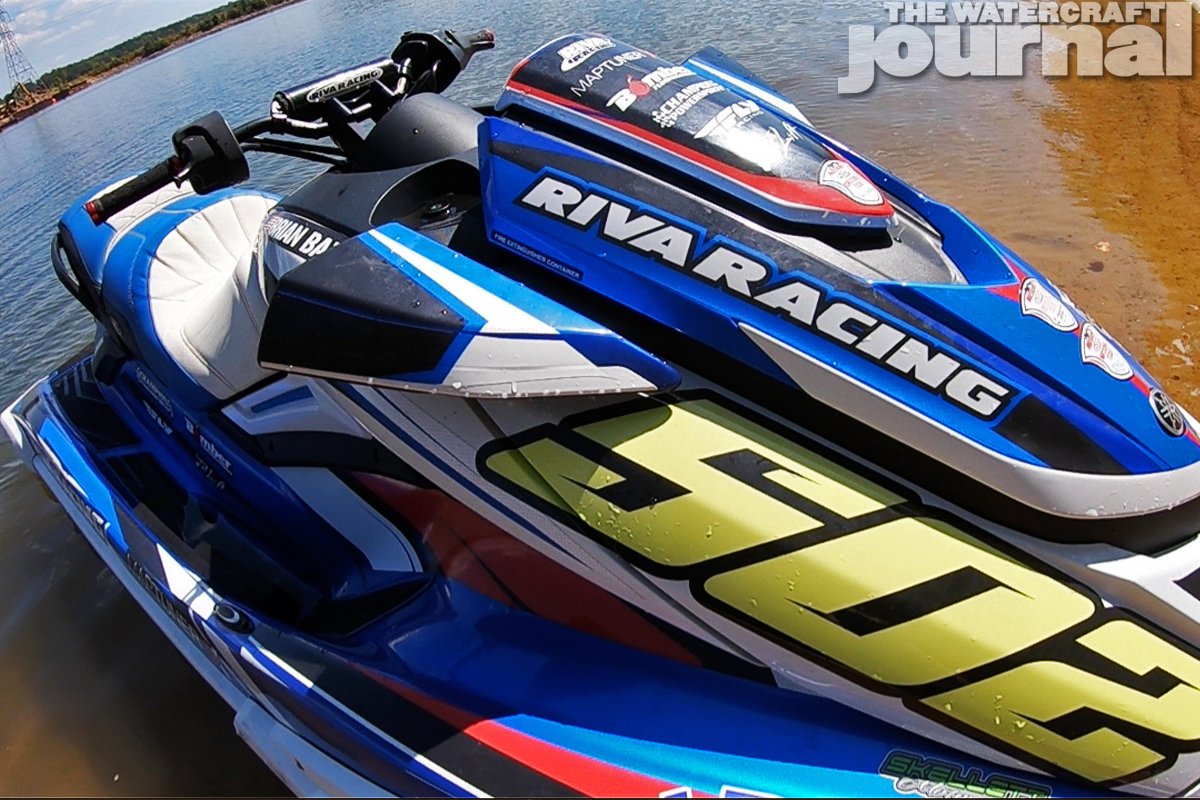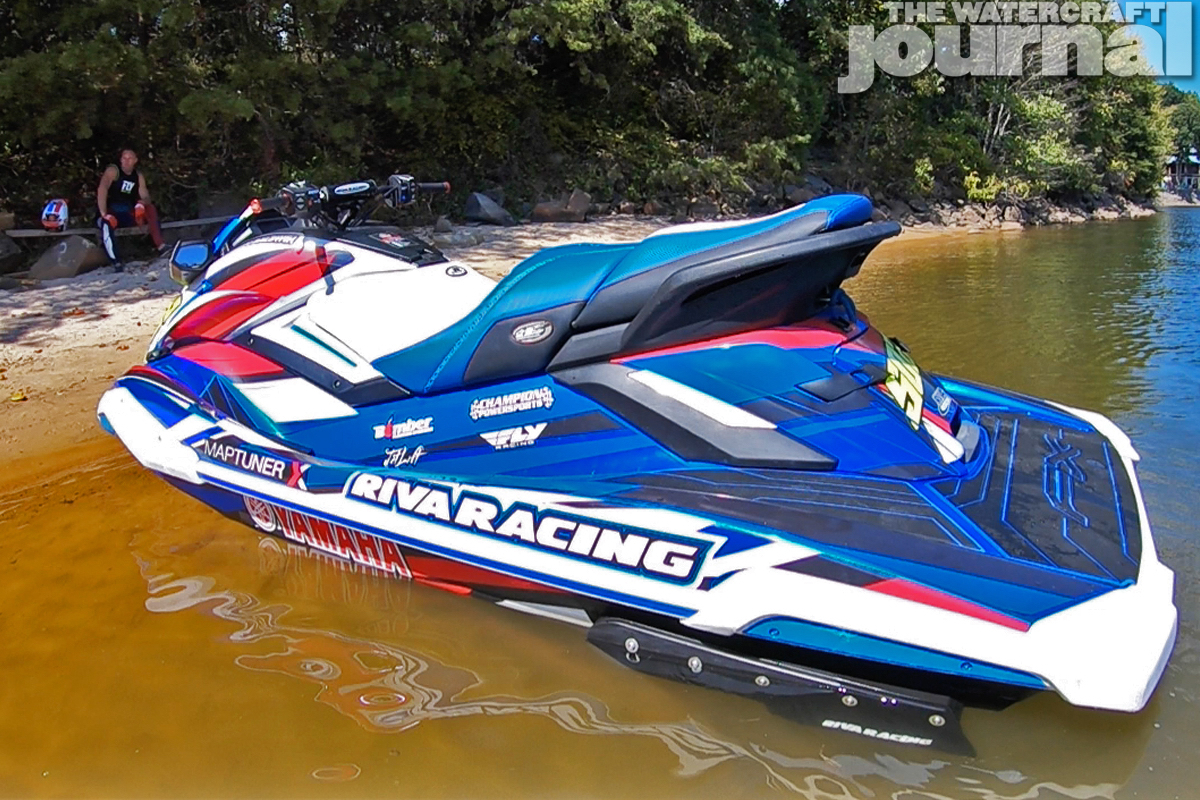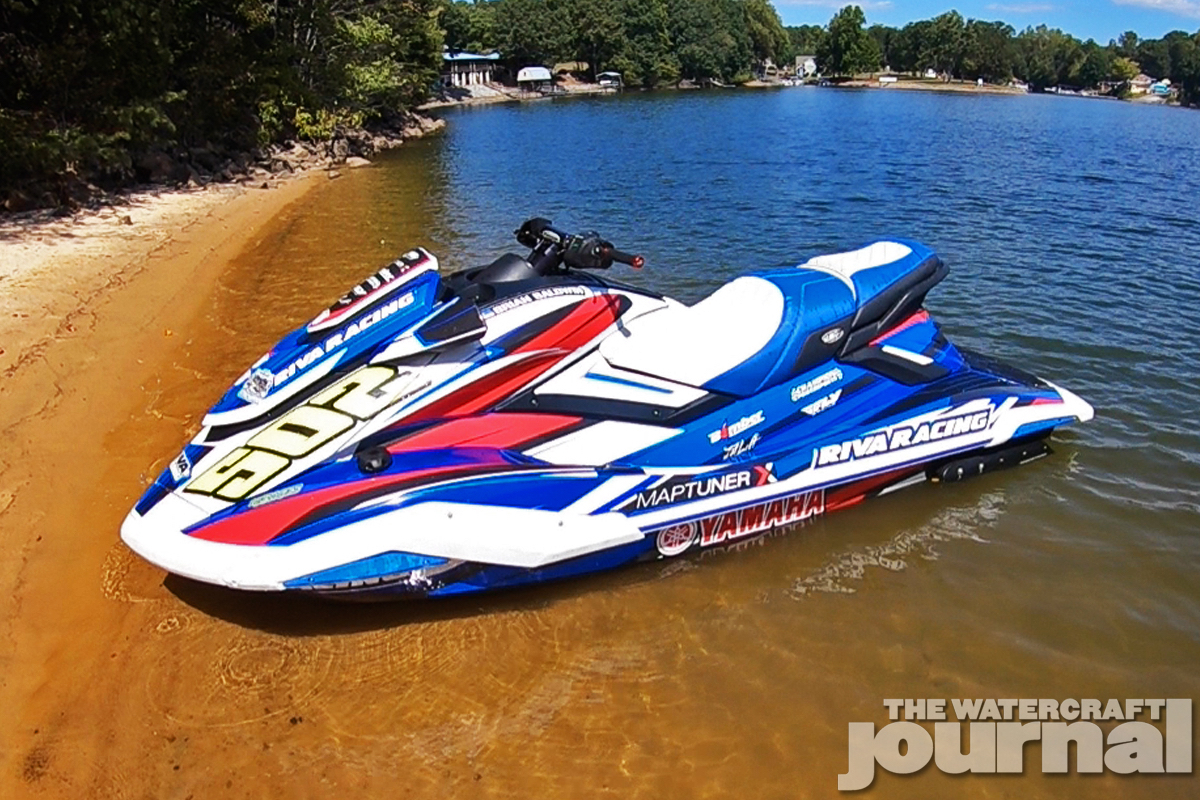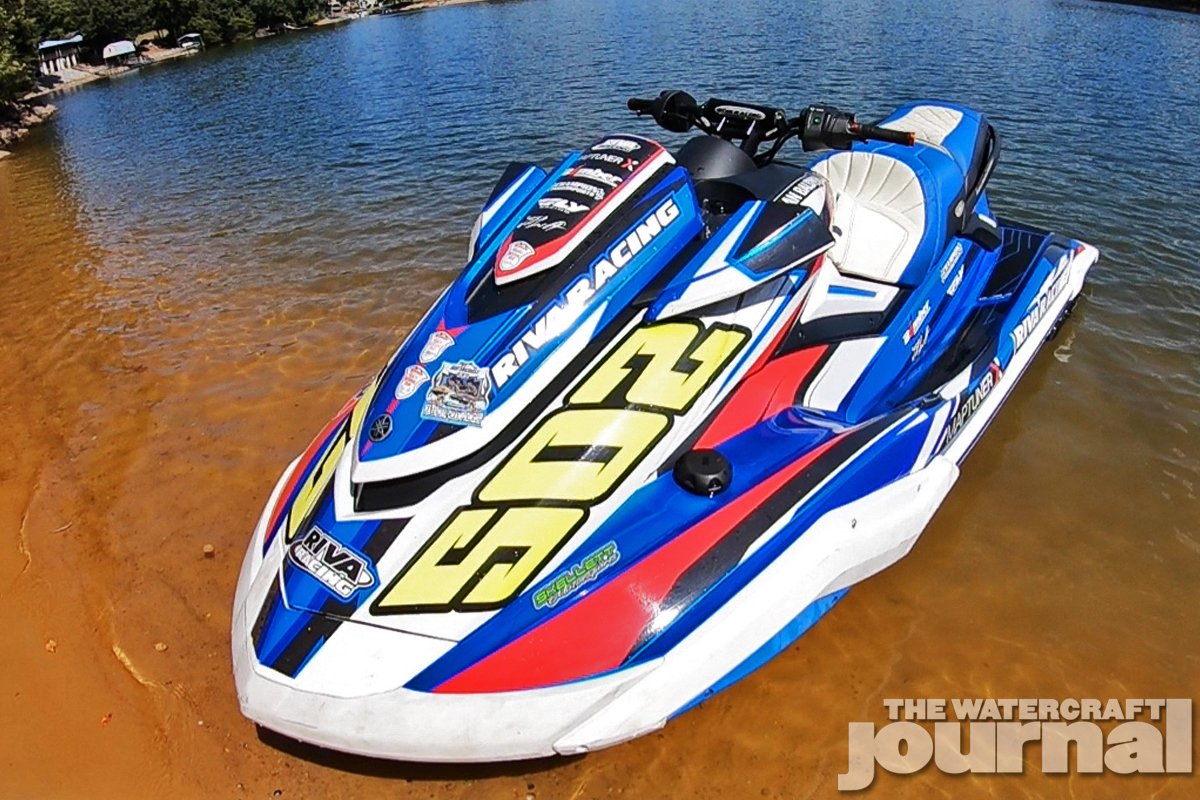
Touring Brian Baldwin’s Champion Powersports watercraft performance tuning and repair shop in Denver, North Carolina is a lot like looking inside of Brian’s brain. Among the countless trophies, placards and number plates lining the walls are vintage racing posters, helmets, banners and memorabilia dating back well beyond his nearly 25-years of racing.
Littering the floor are ancient 550 two-stroke engines, disassembled Rotax 3-cylinders and various Yamaha 4-strokes in different stages of repair. Customer’s Sea-Doos and WaveRunners fill trailers and carts waiting to be trouble-shot, as Brian’s own 9-second, blown Camaro sits on a two-post lift; evidence of his commitment to all things high performance.

Today, the 8-time World Champion promised me a few hours with his very special 2019 Yamaha FX SVHO WaveRunner. Built to meet the exacting scrutiny that comes with competing in P1 AquaX’s Pro Stock class, Brian’s Yamaha carried him to his 10th National Championship this year – as well becoming the reigning AquaX world champion and the highest ranked rider in the world.
Brian’s 5-years as a Factory Yamaha racer included helping develop both the current FX as well as the GP platforms. He explained, “We got one of the first GP1800s back in 2016. I raced it for two years; the thing won every race it entered – we did a lot of R&D [research and development – Ed.] work with RIVA. It’s just an awesome machine.”

He continued, “I was still racing the GP1800 when we got our hands on this new FX, and we developed a lot of parts for Yamaha and RIVA. It won four-out-of-five rounds on the Pro Watercross Tour this summer, and at the P1 [AquaX] if it wasn’t the winner it was on the podium every single round.”
As a RIVA Racing Team Rider, Brian was also instrumental in helping test and develop the many aftermarket parts used both on his #502 race boat, as well as those sold to the public through RIVA.
“A lot of R&D work when into developing the parts on this FX, and I think two of the biggest things were the sponsons and the ride plate. Working with RIVA and Yamaha…y’know, you try one thing, and you’re like, “Yeah, it’s OK,” and you try another thing, and you’re like, “It’s pretty good.” And y’know, when we finally nailed it it was a solid hit. It was absolutely amazing.

“So what we found with the stock FX ride plate was that it liked to push the nose too much. It really put a lot of downforce on the front of the ski, and the RIVA rideplate really gets the ski more on the back-part of the hull, and gives it a lot more top speed as well. [As] for the sponsons, the back of the FX felt kinda loose. We tried the GP sponsons and they felt better but just not the right fit for the FX. [RIVA] worked on the backing plate and the blade and really solved the looseness.
“[Using] the ride plate and sponsons together on the track makes this big ol’ ski feel like a little bitty ski. During a lot of races this year I didn’t get the holeshot, but with the handling package you could literally ride the thing wide open and slice and dice through the pack.”
Racing two series simultaneously, Brian competed in both the P1 Aqua X series as well as the Pro Watercross National Tour. He said, “One of the best parts of racing the Pro Watercross Tour this year was their partnership with VP race fuel. We were able to get 109-octane race fuel brought to every race. With that, combined with the tune (written by RIVA’s master tuner, Jesus Garcia) we were able to put into the ECU with the MaptunerX, we got a lot more performance.”

Despite Brian’s naturally effervescent way, he was also a bit reticent, wanting to keep many of his secrets close to the vest. While I couldn’t peek under the seat, Brian was willing to share a little of the modifications made to the Yamaha FX that lead to his success.
“This [particular] machine is setup for the Pro Stock class, which means we start with a stock machine and change the air cleaner (RIVA Yamaha FX SVHO 2019+ Power Filter Kit), change the valve spring retainers (RIVA Yamaha Valve Retainer Upgrade Kit), and the flash in the ECU with the MapTunerX (RIVA MaptunerX Yamaha 1.8L License) that Jesus wrote for us.
“And then we get to do all the handling stuff; the RIVA ride plate (RIVA Yamaha Performance Ride Plate), the RIVA intake grate (RIVA Yamaha Top-Loader Intake Grate and RIVA Yamaha Pump Seal Kit), the RIVA sponsons (RIVA Yamaha Pro-Series Sponsons) and the RIVA steering (RIVA Yamaha Pro-Series Steering System, RIVA Pro-Bar 30″ Runabout Bars and ODI Ruffian Lock-On Grips).”

When pressed, Brian admitted, “As the ski is set up, with all of these mods and in optimal conditions, we get 83 miles per hour at 9,300rpm.” Although, he didn’t say whether that was on the race gas tune, or the pump gas tune, which we rode today. Now, I’ve ridden a handful of heavily modified watercraft that have hit faster top speeds, there have been very, very few that could corner as violently-precise as Brian’s FX.
This day, Brian had the adjustable RIVA sponsons set all-the-way down, to their most aggressive setting. This meant that, together with the top-loader intake grate, ride plate and billet CNC RIVA steering system, that traction and steering response was set to its maximum. And while this was familiar territory for Brian, it didn’t take long to learn that this was far more machine than I was used to handling.
With plenty of g-forces at play, I quickly decided to let Brian’s stirrup-like foot wedges do all of the work. Trying to use your arms to both hang on and snap off a full-throttle hairpin turn is as close to a Herculean act as it gets; the foot wedges serve to lock your feet into position, letting them keep your lower half from flinging off of the ski as the g-forces try to peel you from it.

Being slightly taller than Brian’s 5’11” height (6’2″) and outweighing him by considerably more, the mandatory riding position created by the foot wedges and steering put me nearly atop the seat’s hump, needing to lean far over to square up to the low-slung handle bars. Although a bit unnatural, keeping as low to the seat proved the best course of action while crisscrossing the isolated finger of Lake Norman that Brian had brought me to.
Although nowhere near the optimal conditions Brian had mentioned (namely being over 760-feet above sea level and my added weight), my handheld GPS recorded a top speed of 81.8mph. The factory touchscreen dashboard never read higher than 70mph though, with that number staying “pegged” throughout much of my test ride. “It’s one of those things you’ve got to override,” Brian noted later.
The 1.8-liter Yamaha SVHO’s stock-internals raced to nearly 9,300rpm, pushing as much boost as its factory HKS supercharger could make. Producing somewhere in the neighborhood of 350-horsepower on high octane race gas, the FX streaked across the water; rigidly tracking through the chop I myself was producing – never once bobbing, porpoising or veering out of control.
The combination of the RIVA top loader intake grate, ride plate and ECU tune wholly eliminated the tell-tale cavitation natural to showroom-stock Yamahas. In the corners, the FX bit the water furiously, leaning in deep, and peeling around the turn like a sport bike on w-rated track tires. As steady as a surgeon’s scalpel, Brian Baldwin’s #502 2019 Yamaha FX SVHO proved to be the very pinnacle of what a race-tuned Yamaha could be.







































